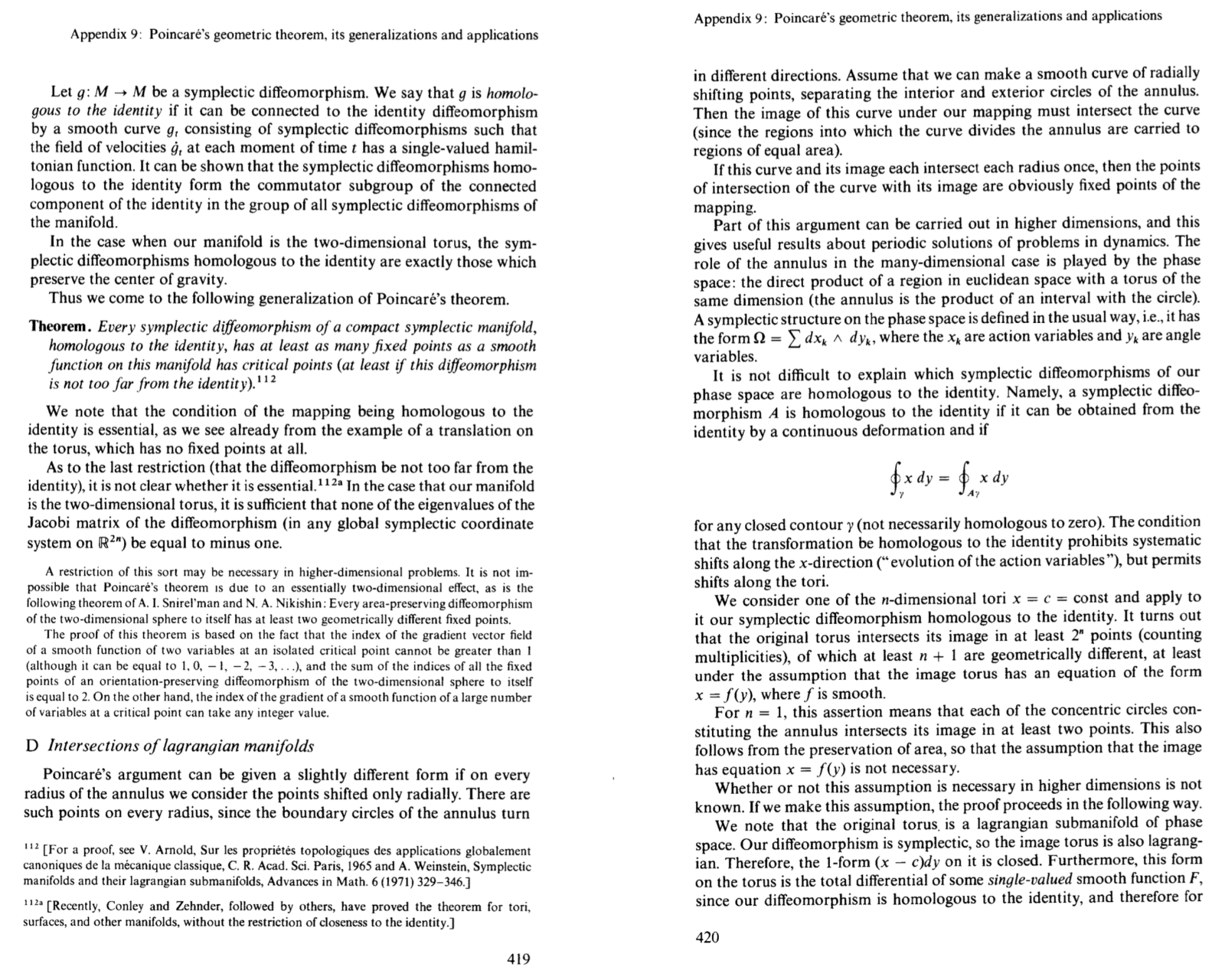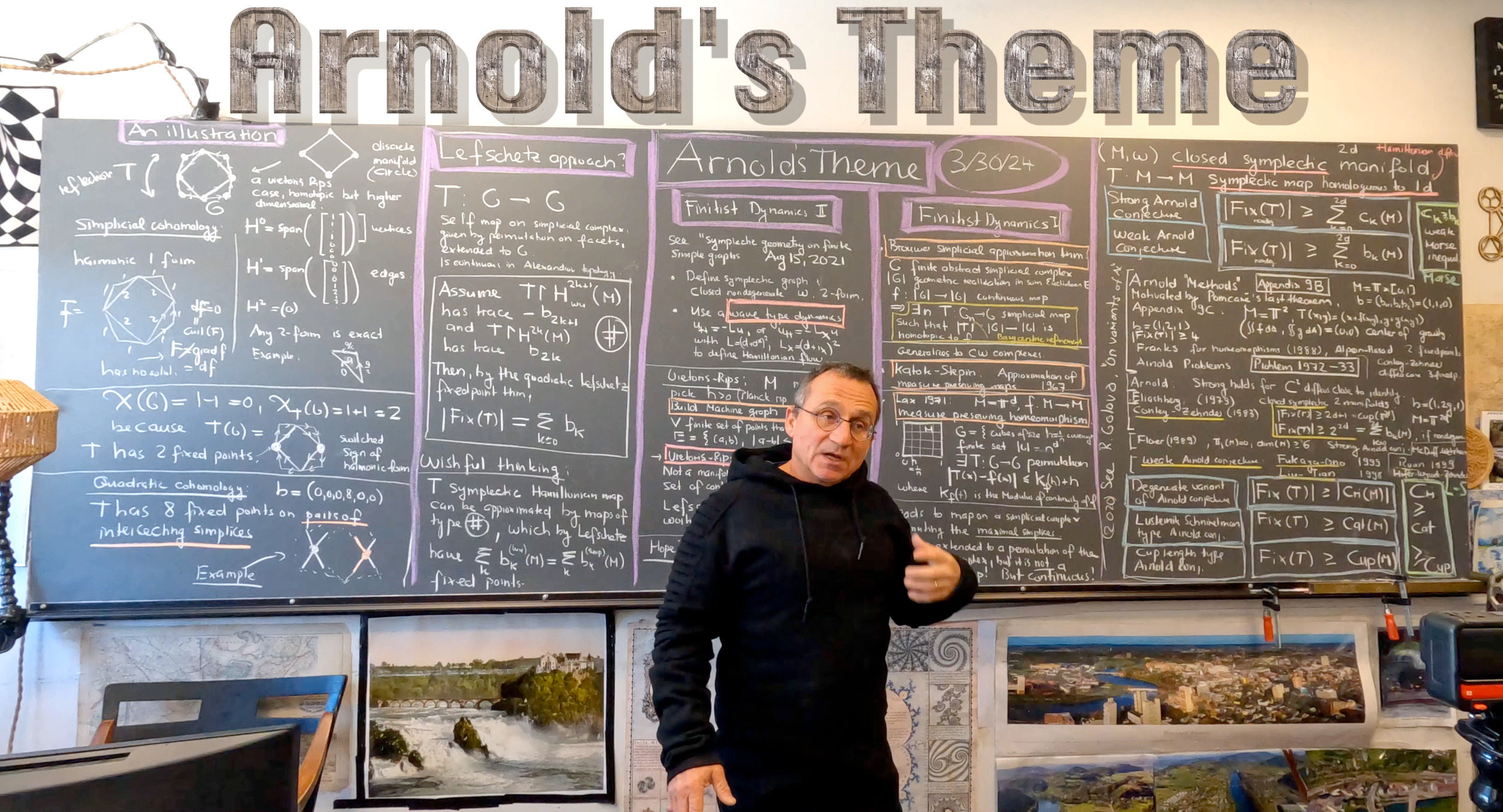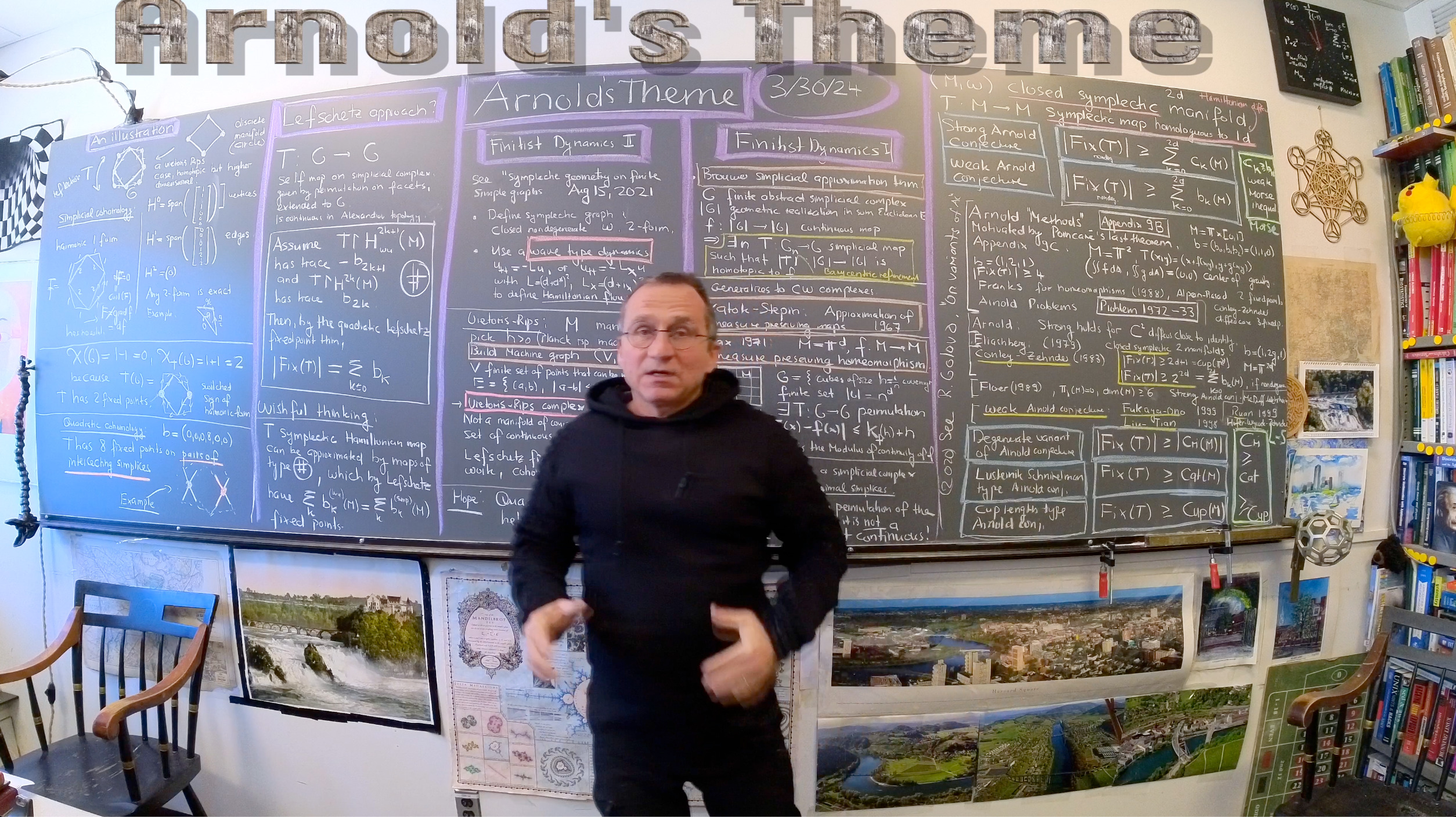Here are some links to the articles mentioned in the talk:
- Arnold’s book “Methods” Appendix 9 (Page 419)
- Conley-Zehnder 1983 They cover the torus case as well as a generalization of Poincare-Birkhoff which is more applicable (Birkhoff-Lewis fixed point theorem) like near elliptic fixed points.
- The fight for symplectic geometry (Quanta magazine) and “Not even wrong” (about Kuranishi structures). See aso math overflow. McDuff and Wehrheim on Kuranish atlases here. There is an annotated paper by Wehrheim here.
- The article of Franks from 1988 on fixed points. Flucher’s article appeared in 1990 here.
- The Hofer Zehnder book appeared in 1994.
- A review article about variants of the Arnold conjecture is here with references to Liu-Tian and Fukaya-Ono.
It surprisingly often happens that a big conjecture tumbles at around the same time. In the case of the Arnold conjecture, several approaches, spear headed by Conley-Zehnder, Eliashberg and Floer have reached the goal. But also almost always with conjectures that have been around for along time, the proofs are complicated and led to aftershock discussions. Quanta had once an article about the foundations of symplectic geometry. For me, more like a tourist in the field, it is still a fascinating spectacle to see different groups and approaches compete in a difficult research area. I saw fellow graduate students struggle with the fast-paced and competitive nature of the subject. One of these friends, Frank Josellis, had a bit the bad luck of having to live in the shadow of Andreas Floer during that time. I have seen other students “running after Floer’s work” who still was sprinting producing papers and sometimes was hanging out near our offices as Edi Zehnder was also just nearby. As often when success is too large, Floer must have had difficulty coping with that fame and committed suicide. Somehow, one can understand the mechanism: with such an enormous success comes also enormous pressure. It is almost impossible to top the coup of building a theory that can solve an important problem.
I myself only know rather second hand about the subject. As a graduate student, I had an office with some “symplectic people” and took a course of Zehnder about it (who would essentially spear head his then forthcoming book with Hofer). That book is refreshingly clear and very readable (one can not say that from almost all other symplectic books). I could even use it as a textbook for a course in Hamiltonian dynamics, I gave as a postdoc at Caltech. That was a course, where I did not do much beyond just presenting the material from the book ( Postdoc time is also a bit of a time of pressure to produce papers and having had that amazingly clear book made it easy to teach from it). I myself had been interested in symplectic geometry mainly because of its relation to ergodic theory. In my diploma thesis, Moser suggested first to get into stability questions like KAM theory in the context of celestial mechanics like the Stoermer problem. I got more interested in “chaos” and Lyapunov exponents, a topic which I was trying to get into more for many years and which of course is also relevant in celestial mechanics. During my postdoc time, in the wake of Barry Simon’s whirlwind research on singular continuous spectrum, I did not lose track completely on dynamics and showed once that Hamiltonian systems have lots of weakly mixing invariant tori in general. It is a simple result (I owe part of it also to Maciej Wojtkowski) but nice and I would later learn that Michael Herman had seen such a thing too but had never written down. The result is also connecting to a “big open problem” in Hamiltonian dynamics: can there be mixing invariant tori of Hamiltonian systems. That problem is wide open. Weak mixing just means absence of pure point spectrum.
Since my sophomore year, I had been an Arnold Fan. His book on “Methods of Classical mechanics” was my “bible”. I learned about it from Juerg Froehlichs course in “Theoretical mechanics” at ETHZ which had been mandatory for math and physics majors. As one can see from my ETH curriculum is here, the courses “Theoretical Mechanics” was given in the third semester. I actually just found the notes: Part 1 and Part 2 (PDF’s) . A beautiful course, very mathematical. While reading beside, I liked Arnold’s style of getting to the point, of peeling out the essential things. And the appendices are like revelations to an other century as it turned out. Like the Arnold conjecture which appears in Appendix 9.











